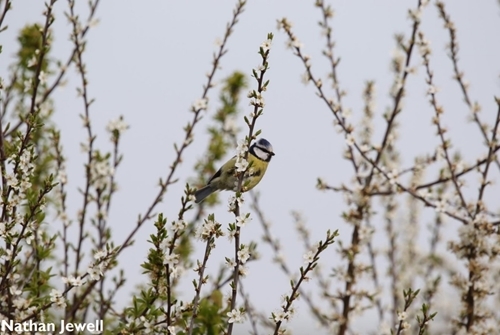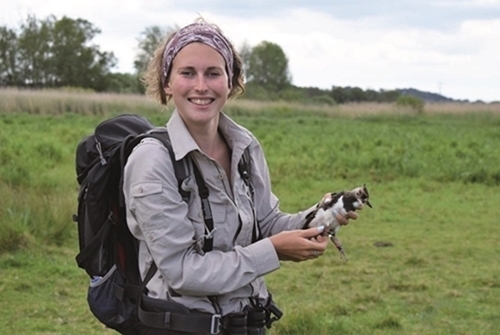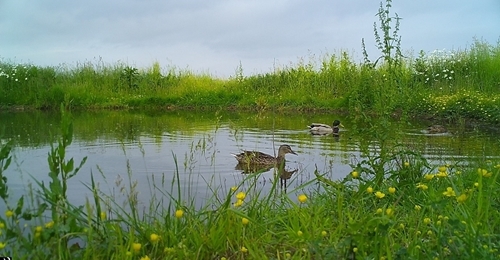
Jess Brooks looks deeper into the 2023 GWCT Big Farmland Bird Count data…
To recap in case you missed it, the tenth GWCT Big Farmland Bird Count (BFBC) took place in February 2023 and farmers recorded over 460,000 birds from 149 species across more than 1.5 million acres. Check out the full results here.
Diving into the different bird types
This year we thought it would be interesting to report on the different groups and families of birds you saw. Read on to find out which species of goose topped the wildfowl list, and which farm claimed the highest count of linnet!
Of all the bird species seen during the 2023 BFBC:
- 28% were types of farmland songbirds
- 17% were wildfowl
- 10% were waders
- 10% were birds of prey
The remainder were types of pigeon, gull, woodpecker, corvid, heron or gamebird.
Songbirds
Farmland songbirds were the most diverse group of birds in the 2023 count with 43 species seen. Over half of these are Red- or Amber-listed species of conservation concern.
The top 5 farmland songbirds were:
- Linnet
- Chaffinch
- Yellowhammer
- Blue tit
- House sparrow
Linnet made up 15% of all songbirds spotted, despite only being recorded on two in 10 farms. A third of farmers who spotted linnets saw at least 100 individuals on their counts.
The top count for linnet (1,035) was from Warden Farms, an arable farm on the Oxfordshire-Northamptonshire border which is a Kellogg’s OriginsTM sustainable cereal grower. “We have been involved in various stewardship schemes over the years and have recently moved from HLS to Mid-Tier Countryside Stewardship. These schemes, including the Cherwell Catchment Sensitive Farming Initiative, have been hugely beneficial to the wildlife on our farm,” they said.
The top counts for two nationally rare species – corn buntings (400) and tree sparrows (300) – were from a farm in the Marlborough Downs Space for Nature which is an award-winning group of farmers in Wiltshire. They have been doing conservation together on a landscape-scale since 2011 and have managed to expand the range of their tree sparrow colonies.
Waders
Over 85% of the wader species spotted in the 2023 event are Red- or Amber-listed, making them one of the most threatened groups of farmland birds in this year’s count.
The top 5 waders were:
- Lapwing
- Golden plover
- Curlew
- Snipe
- Oystercatcher
Lapwing were the most abundant species, accounting for 18,700 out of the 22,700 wading birds observed. They were seen on one in 10 farms.
Lapwings are iconic farmland birds but they have suffered a steep decline, with numbers falling by 50% since 1983.
About half of farmers who reported lapwing counted less than 10 birds, but some lucky farms reported numbers in the thousands. Some very encouraging news was that over 1000 lapwing were recorded on one count from the Avon Valley in Hampshire, where a group of farmers is putting in measures to conserve lapwing.
GWCT scientists have been monitoring waders in the Avon Valley since the mid-1990s. In 2015, after noticing alarming declines in numbers, they began working with 40 of the valley’s farmers, land managers and gamekeepers on the ’Waders for Real’ project. These budding wader conservationists later became the Avon Valley Farmer Cluster and succeeded in reversing the decline, seeing lapwing numbers rise from 61 pairs in 2015 to 105 pairs in 2019, and breeding success reaching sustainable levels.

GWCT scientist Lizzie Grayshon monitoring lapwing in the Avon Valley, Hampshire
Wildfowl
Over 65% of the wildfowl species that were recorded on farmland during the BFBC are Red- or Amber-listed.
The top 5 wildfowl were:
- Pink-footed goose
- Brent goose
- Wigeon
- Mallard
- Greylag goose
A total of 42,946 individual wildfowl were seen – considerably fewer than songbirds or waders, but this is expected because only a small percentage of farms surveyed on coastal and wetland habitat where wildfowl are usually found.
Pink-footed geese were the most abundant wildfowl with 15,000 seen, but they were only recorded on one in 100 farms. The top counts came from Norfolk in England and Midlothian in Scotland on coastal farmland sites that attract big flocks of overwintering ducks, geese and waders.
Mallard were the most commonly spotted wildfowl species, seen by a third of farmers. Encouragingly, 40% of farms taking part in the count have a pond, which attracts a wide range of wildlife as well as wildfowl.

A final word
Finally, to round off this year’s results we’d like to give a shout out to the BFBC entry which reported the highest number of farmland bird species…
This accolade goes to a farm in the Selborne Landscape Partnership (SLP) in Hampshire, where a whopping 66 species of birds were spotted in the 30-minute count!
A huge well done to the 27 farmers of the SLP which, incidentally, is one of the original GWCT pilot farmer clusters formed in 2014 to deliver joined-up farmland conservation. Bravo!